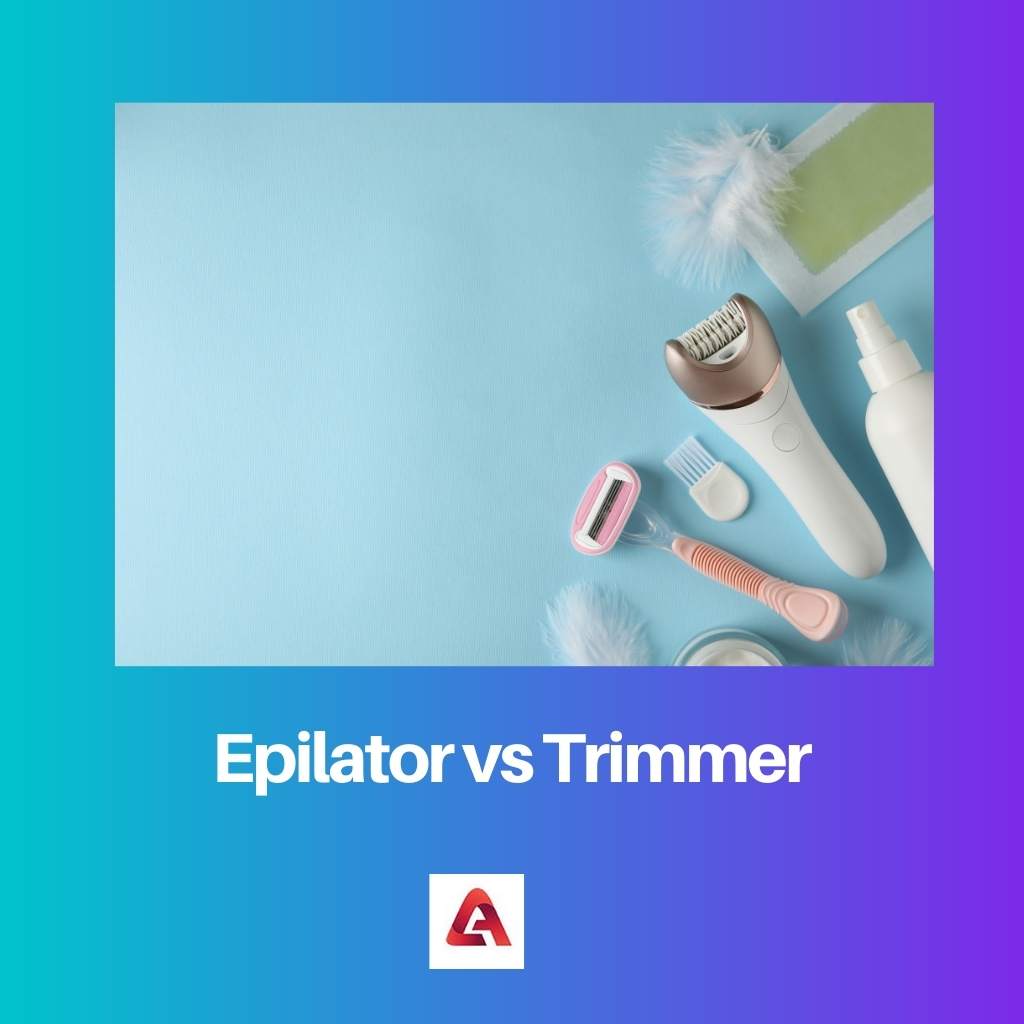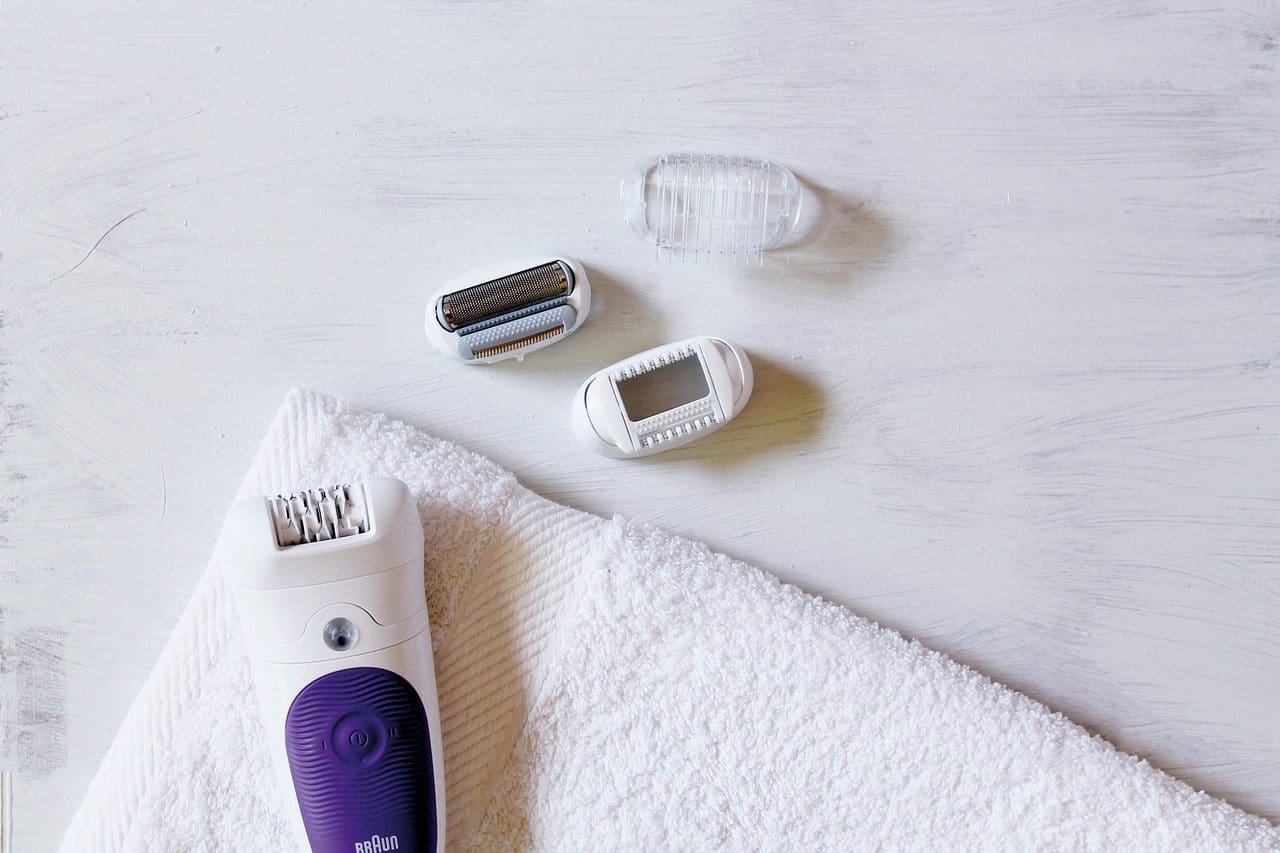Epilators are hair removal devices that grasp and pull out multiple hairs simultaneously from the root, providing longer-lasting smoothness, but can be more painful for some users.
Trimmers, on the other hand, are grooming tools designed to cut hair at a specific length without removing it from the root, offering a quick and painless solution for maintaining shorter hair or facial hair.
While epilators are suitable for achieving smoother skin with longer regrowth periods, trimmers are ideal for precise trimming and shaping of hair without the discomfort of hair removal.
Key Takeaways
- Epilator is a device that removes hair from the roots, while a trimmer is a device that cuts hair to a desired length.
- An epilator is more painful than a trimmer and can cause skin irritation, while a trimmer is painless and less likely to cause skin irritation.
- Epilator is better suited for removing hair from larger areas, while the trimmer is better suited for trimming and shaping smaller areas of hair.
Epilator vs Trimmer
The difference between Epilator and a trimmer is that when the hair in a body is removed through an epilator, it is plucked from the body of a person, and on the other hand, when the hair in a body is removed through a trimmer, it is just cut from the surface of the skin of a person.

An epilator is a way of removing body hair for women. This is considered to be one of the best options when it comes to women’s preference for removing their body hair.
A trimmer is a way of removing the hair of a person’s body. When a woman removes her body hair through a trimmer, it is called to be a painless procedure.
Comparison Table
| Feature | Epilator | Trimmer |
|---|---|---|
| Hair Removal Method | Plucks hair from the root | Cuts hair to a specific length |
| Results | Longer-lasting smoothness (weeks) | Shorter-term hair removal (days) |
| Pain | Can be painful, especially during initial use | Painless |
| Regrowth | Finer, slower hair growth over time | Hair grows back at the same thickness and rate |
| Suitability | For those who want long-lasting smooth skin | For quick, painless hair removal or maintaining short hair length |
| Skin Sensitivity | May irritate sensitive skin | Generally gentler on skin |
What is Epilator?
Epilators are versatile personal grooming devices designed to remove unwanted body hair by grasping and pulling it out from the roots. This method of hair removal offers longer-lasting results compared to shaving or depilatory creams. In this comprehensive guide, we’ll delve into the various aspects of epilators, from their functionality to usage tips and maintenance.
How Epilators Work
1. Mechanism
Epilators typically feature rotating discs or tweezers that grasp multiple hairs simultaneously. As the device moves across the skin, these components pluck the hairs from their follicles, leaving the skin smooth. This method ensures a more extended hair-free period compared to methods that only trim or cut the hair.
2. Pain Factor
The sensation of using an epilator varies among individuals. Some users may experience mild discomfort or pain during the process, especially on sensitive areas, while others find it tolerable. Regular use often leads to reduced discomfort over time as the skin adapts to the process.
Advantages of Using an Epilator
1. Long-Lasting Results
One of the primary advantages of epilation is its ability to provide longer-lasting smoothness. Since the hair is removed from the root, it takes longer to grow back compared to shaving or other superficial hair removal methods.
2. Precision
Epilators offer precision in hair removal, allowing users to target specific areas with accuracy. This makes them suitable for shaping eyebrows, removing facial hair, and maintaining precise lines in various body areas.
3. Cost-Effective
While the initial cost of an epilator may be higher than disposable razors, the long-term cost is significantly lower. With proper maintenance, an epilator can last for years, eliminating the need for frequent purchases of replacement blades or cartridges.
Tips for Effective Epilation
1. Exfoliation
Prior to using an epilator, exfoliate the skin to remove dead skin cells and reduce the risk of ingrown hairs. This helps the epilator grasp the hair more effectively, resulting in smoother results.
2. Stretching the Skin
To minimize discomfort and ensure efficient hair removal, stretch the skin taut while using the epilator. This provides a smoother surface for the device to glide over, reducing the likelihood of hair breakage.
Maintenance and Care
1. Cleaning
Regularly clean the epilator to prevent the buildup of hair, oil, and debris. Refer to the manufacturer’s instructions for proper cleaning techniques, which often involve removing the epilation head and cleaning it under running water.
2. Replacement Parts
Depending on the model, some epilators may have replaceable heads or discs. Keep track of the recommended replacement schedule and promptly replace worn-out components to ensure optimal performance.

What is Trimmer?
A trimmer, in the context of electronics and electrical engineering, refers to a device designed for the precise adjustment or trimming of electronic components, such as resistors or capacitors. This versatile tool plays a crucial role in fine-tuning circuits, ensuring optimal performance and accuracy. Let’s delve into the various aspects of trimmers.
Types of Trimmers
Trimmers come in different types, each serving specific purposes in electronic applications:
1. Potentiometers
Potentiometers, or variable resistors, are widely used as trimmers. They have three terminals, allowing for the adjustment of resistance within a circuit. Trimmers of this type find applications in audio equipment, lighting systems, and electronic instruments.
2. Capacitor Trimmers
Capacitor trimmers, also known as variable capacitors, enable the adjustment of capacitance in a circuit. These trimmers are crucial in tuning radio frequency (RF) circuits, ensuring optimal signal reception.
3. Resistor Networks
Trimmer resistors are often utilized in resistor networks, providing adjustable resistance in a compact form. This type of trimmer is commonly found in integrated circuits and precision electronic devices.
Applications
Trimming components within a circuit is essential for various applications, including:
1. Calibration
Trimmers are used to calibrate electronic systems, ensuring that components operate within specified tolerances. This is particularly crucial in precision measurement equipment and scientific instruments.
2. Frequency Tuning
In RF circuits, capacitor trimmers play a vital role in tuning the frequency of oscillators and filters. This is essential for optimal performance in communication systems.
3. Voltage Adjustment
Potentiometer trimmers are employed for fine-tuning voltage levels in electronic circuits. This is commonly seen in power supplies and amplifiers to achieve the desired output.
Design and Construction
Trimmers are designed with precision in mind, often incorporating materials with low temperature coefficients and high stability. The construction may include a wiper that makes physical contact with the resistive or capacitive material, allowing for smooth and accurate adjustments.
Challenges and Considerations
While trimmers offer precise adjustments, there are certain challenges and considerations:
1. Temperature Sensitivity
Trimmers can be sensitive to temperature changes, impacting their performance. Specialized designs and materials are employed to mitigate this sensitivity.
2. Mechanical Wear
Continuous adjustments may lead to mechanical wear, affecting the long-term reliability of trimmers. This is a consideration in applications where frequent adjustments are expected.

Main Differences Between Epilator and Trimmer
- Functionality:
- Epilator: Removes hair from the root by grasping and pulling multiple hairs simultaneously.
- Trimmer: Cuts hair to a desired length without removing it from the root.
- Hair Length:
- Epilator: Provides longer-lasting smoothness as it removes hair from the root, leading to slower regrowth.
- Trimmer: Maintains the current length of hair without affecting the root, allowing for quick touch-ups.
- Precision:
- Epilator: Effective for precision hair removal in small areas, suitable for shaping eyebrows or removing facial hair.
- Trimmer: Ideal for maintaining uniform hair length, especially in larger areas like beards or body hair.
- Pain Level:
- Epilator: Can be more uncomfortable, especially for beginners, as it involves pulling hair from the root.
- Trimmer: Generally less painful, as it only cuts hair without pulling it from the root.
- Usage Areas:
- Epilator: Commonly used on legs, arms, underarms, and face for hair removal.
- Trimmer: Widely used for grooming facial hair, body hair, and even for detailing in various styles.
- Hair Type:
- Epilator: Effective for various hair types, including fine and coarse hair.
- Trimmer: Suitable for maintaining the length of all types of hair, but may not be as effective for removing very short or fine hair.
- Maintenance:
- Epilator: Requires cleaning and occasional replacement of epilating heads.
- Trimmer: Requires regular cleaning of blades and may need oiling for optimal performance.
- Portability:
- Epilator: Portable but may be bulkier due to the mechanism for pulling hair from the root.
- Trimmer: Generally more compact and easier to carry for on-the-go grooming.
- Cost:
- Epilator: Often more expensive due to the technology involved in removing hair from the root.
- Trimmer: Generally more affordable as it focuses on cutting hair without advanced hair removal mechanisms.

- https://onlinelibrary.wiley.com/doi/abs/10.1111/pde.13938
- https://www.jpagonline.org/article/S1083-31880600060-X/pdf

The article clarified the main differences between epilators and trimmers, which has been very helpful in making a decision. I now know which one to choose.
It was great to know the differences between the regrowth after using epilators and trimmers.
The distinction between epilators and trimmers was excellently explained. I now feel knowledgeable to make an informed choice between the two methods.
The detailed explanation about epilators and trimmers was very informative, I appreciate the scientific reference included too.
I feel the same way, I can confidently choose the right method for me now.
This was a very informative article, the differences between epilators and trimmers are quite clear now. I am definitely opting for the trimmer next time. It is what works best for my skin and schedule.
Thank you for sharing, I learned a lot from your post.
I agree, the comparison table was really helpful!
I appreciate the detailed explanation about epilators and trimmers. I never really understood the difference before but now it’s quite clear.
The benefits and drawbacks of each method were well presented.
It’s great that the article included the references too.
The comparison table is very helpful in making a decision, I appreciate the detailed cost and time differences.
I agree, it’s great to have all this information clearly laid out.
I’m glad the article delved into the costs – it’s an important factor to consider.
The article was quite informative and well-researched, I learned a lot about epilators and trimmers today.
Completely agree, the benefits and drawbacks were helpful.
I was looking for a detailed comparison of epilators and trimmers, and the article really delivered. The pain differences were particularly interesting to me.
I so agree, the pain factor is definitely a crucial one to consider.
The distinction between epilators and trimmers was excellently explained. I have a much better understanding now.
I feel the same way, I can confidently choose the right method for me now.
The detailed explanation about epilators and trimmers was very informative, I appreciate the scientific reference included too.
The scientific reference was indeed very helpful.
I feel that the article has now given me the knowledge to make a confident decision.
The information provided was well-organized and thorough, I will definitely consider the choice of an epilator or trimmer more carefully now.
Definitely, the comparison table was very clear.
I agree, it’s easier to make a decision now.